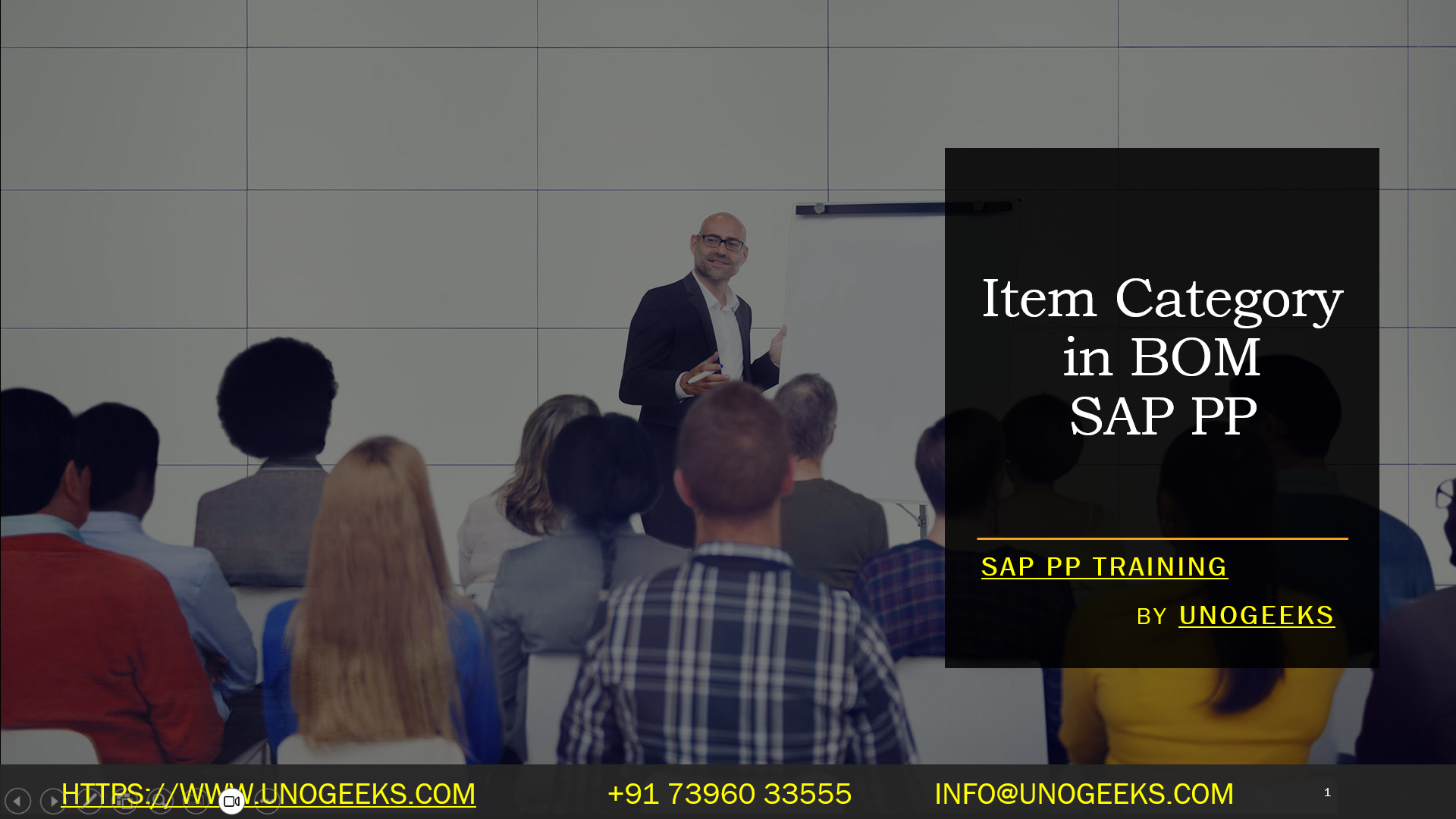Item Category in BOM SAP PP
Understanding Item Categories in SAP PP BOMs: The Nuts and Bolts
In SAP Production Planning (PP), Bills of Materials (BOMs) are crucial. But BOMs aren’t just a list of components – they hold vital information that dictates how production runs. One key element within a BOM is the item category. Let’s delve into item categories and how they impact your SAP PP processes.
What is an Item Category?
Think of an item category as a pre-defined set of rules that govern how a specific component behaves within a BOM. It determines factors like:
- Inventory Management: Can the component be kept in stock? (e.g., raw materials) Or is it a non-stock item procured directly for production (e.g., custom parts)?
- Procurement: How is the component acquired? Does it trigger a purchase requisition, or is it handled differently (e.g., in-house production)?
- Data Requirements: What information is mandatory when entering the component (e.g., material number, quantity)?
Common Item Category Types:
- Stock Item (F): This is your standard stockable component, managed through Material Master data.
- Non-Stock Item (N): For components not kept in stock, typically procured for a specific production order.
- Variable Size Item (L): Allows specifying different sections of material of different sizes using one material number.
- PM Structure Element (PM): Used for structuring equipment assemblies within Plant Maintenance BOMs.
Why are Item Categories Important?
Item categories ensure consistency and efficiency in production planning. They automate processes like:
- Stock Level Checks: The system automatically checks stock levels for stock items, triggering replenishment orders if needed.
- Purchase Requisition Generation: The system creates purchase requisitions for non-stock items.
- Data Validation: The system enforces data entry rules based on the chosen item category.
Customizing Item Categories:
SAP allows you to customize item categories to fit your specific needs. This lets you define the required data fields, control further processing activities, and tailor the system’s behavior for each component type.
Conclusion:
Item categories may seem technical, but they play a significant role in streamlining your SAP PP operations. Understanding how item categories work can optimize your BOMs, ensure data accuracy, and improve production efficiency.
Conclusion:
Unogeeks is the No.1 IT Training Institute for SAP PP Training. Anyone Disagree? Please drop in a comment
You can check out our other latest blogs on SAP PP here – SAP PP Blogs
You can check out our Best In Class SAP PP Details here – SAP PP Training
Follow & Connect with us:
———————————-
For Training inquiries:
Call/Whatsapp: +91 73960 33555
Mail us at: info@unogeeks.com
Our Website ➜ https://unogeeks.com
Follow us:
Instagram: https://www.instagram.com/unogeeks
Facebook:https://www.facebook.com/UnogeeksSoftwareTrainingInstitute
Twitter: https://twitter.com/unogeek
